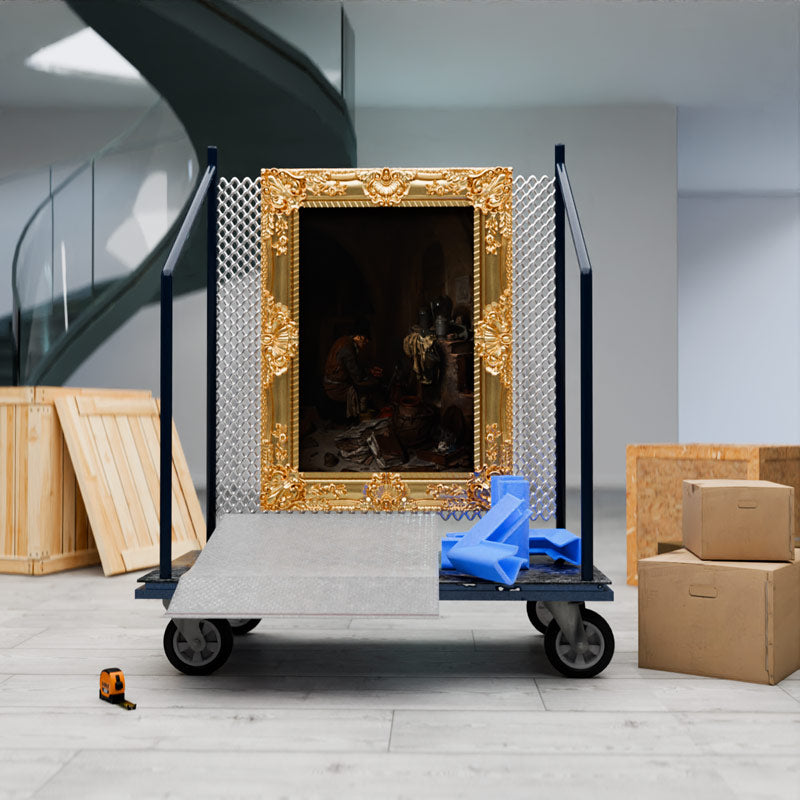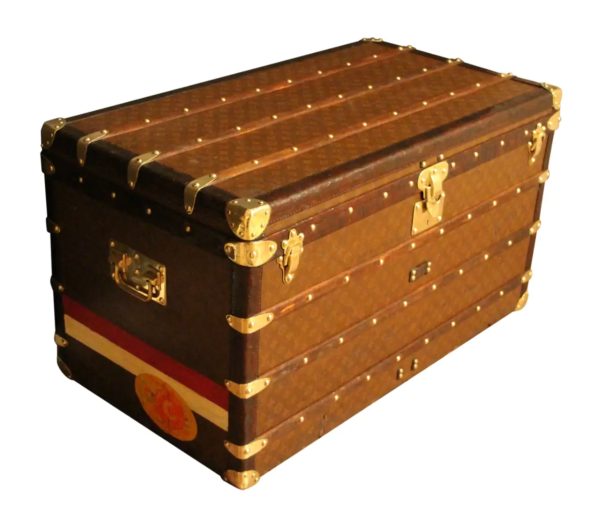
Louis Vuitton: From simple layetier to creator of the famous trunk.
a brief history of packaging
You are definitely familiar with the Louis Vuitton trunk.
But did you know that the story of the Vuitton family's entrepreneurial saga began in the 19th century in a rapidly changing world?
“Luxury must be comfortable, otherwise it is not luxury .”
Louis Vuitton
Short biography of Louis Vuitton
Louis Vuitton was born in 1837 in the Jura region. He was 16 years old when he arrived in Paris to apprentice with Mr. Maréchal.
Louis Vuitton began his career as a layetier-packeur , a discipline for which he was particularly gifted. In an era where luggage was put to the test during transport, having a talent in this field was quite promising. And it turns out that Louis Vuitton was gifted at making crates and trunks.
The Vuitton adventure was launched. Building on this experience and after 17 years of service with Mr. Maréchal, the first Maison Vuitton opened its doors in 1854 at 4 rue de Neuve-des-Capucines in Paris.
Louis Vuitton remained faithful to its expertise, offering wooden crates, trunks, and travel items. From the outset, Louis Vuitton positioned itself on high-end items. Four companies shared this thriving market: Hermès, Goyard, Moynat, and Vuitton. They were also the first to sign their luggage, a sign of their excellence. The other players in the market then appeared as more modest service providers.
The Louis Vuitton trunk
The trunk known as the Louis Vuitton trunk is known worldwide. The genius of Louis Vuitton and his son Georges lies in the innovations they developed to revolutionize the making of a travel trunk .
By extension, they revolutionize or even create the art of travel.
Innovation 1: The shape of the trunk
In the 19th century, people traveled with all their personal belongings . It was tedious, cumbersome, and as we have seen, the objects were subjected to severe strain.
All trunks from this era have domed lids, making them particularly difficult to store. The lids are domed in both directions to allow rain to drain properly. This shape also enhances their strength.
Louis Vuitton and his son Georges, aided by a particularly efficient workshop composed of 20, then 100 and finally 225 workers in 1914, decided to make the lid flat.
This workshop still exists, it is located in Asnières in the suburbs of Paris.
The trunks are handmade, in high quality materials such as leather, wood, brass.
The trunks can then be stored one on top of the other.
From the outset, Louis Vuitton positioned itself as a luxury product, like Moyat, Goyard, and Hermes.
They are the only ones who sign their creations with a dedicated label and logo. If you own a trunk and it doesn't have a label with one of these four names, you can be sure it doesn't come from one of these pestige houses.
The floral motif created by Georges became the symbol of the Vuitton house. It quickly appeared and came to cover most of the brand's products.
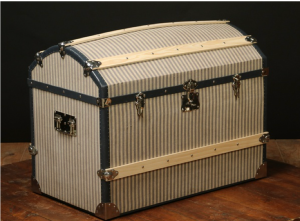
Travel trunk with domed lid
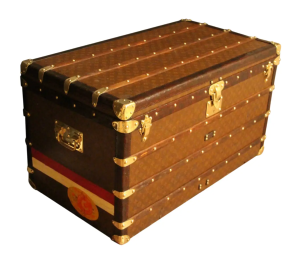
Louis Vuitton travel trunk
The flat lid of the trunks allowed for better stacking of luggage in the back of horse-drawn carriages.
Innovation 2: an ultra-resistant lock.
Louis Vuitton also evolves all the components of a travel trunk.
Thus, he reviewed in detail the lock system adopting a tumbler lock . Instead of traditional leather-enclosed locks, father and son preferred to affix a central tumbler lock and two locks on either side.
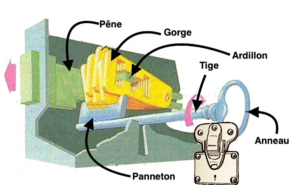
Thanks @ malle2luxe for this diagram
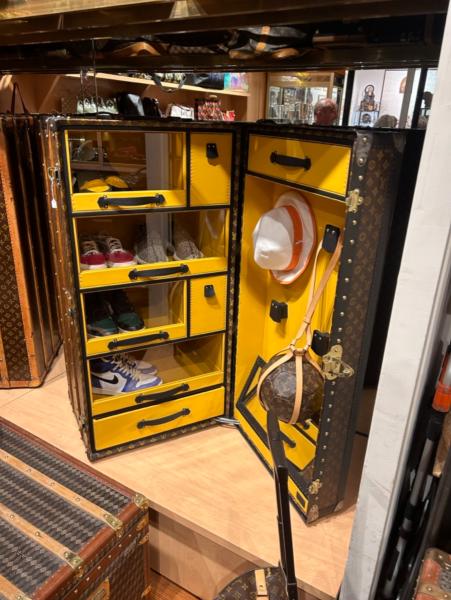
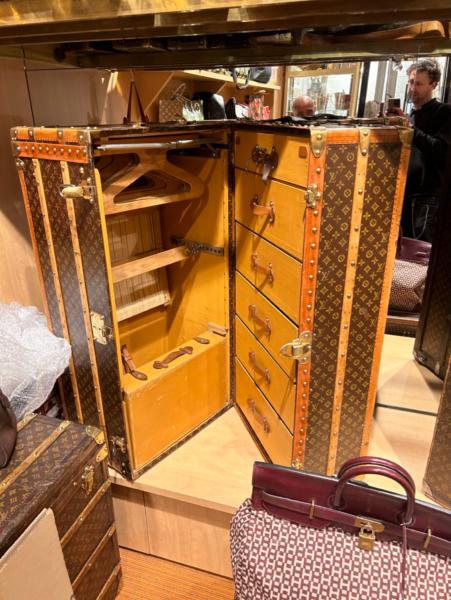
With these two innovations, Louis Vuitton perfectly embodies the reason why he created his own store: the combination of elegance and functionality.
Louis Vuitton travel trunks have become collector's items in their own right. They come in all sorts.
Some antique dealers at the Paris Saint-Ouen Flea Market have made this their specialty, like Elisio Das-Neves with his shop at the Serpette market. As these two photos show.
At that time, there were a huge number of workshops making travel trunks or wooden crates.
But only Vuitton, Goyard, and Moynat focused on creating luxury products that were aesthetically pleasing, lightweight, and innovative. These products became true symbols of social status and elegance.
A packaging specialist is called a layetier-emballeur
What is the job of a layetier-packer?
As previously seen, Louis Vuitton was in the service of Mr. Maréchal for 17 years, as a layetier-packer
But what is the job of a layetier?
It is defined as follows: a manufacturer of layettes (boxes for clothes), wooden crates and various packaging.
The term layetier has existed since 1582.
Quickly, the terms layetier and packer were associated to define the same profession.
The two skills are combined to pack objects and works of art. Generally, the packer takes the measurements while the layetier makes the wooden packing case.

19th century layetier drawing
With the development of travel, the profession of packer became fashionable at the end of the 19th century.
But what are the qualities of a good packer?
The qualities of a good packer
The good packer according to the definition of the Universal Dictionary of Arts and Crafts published in 1773 is defined in several points.
- Arrange the goods so that there are no gaps between them.
- The goods do not rub against each other
- Separate fragile goods from heavier ones
- Manage the proper closing of the cash registers
- Unload if possible once shipped

You need to go to page 329 to find out a few words about this profession, which consisted of assembling wooden boards in order to create a packaging item.

By creating our packing station in the heart of the Saint-Ouen flea market, we are contributing to the history of this little-known profession.
A packing station in the heart
Paris-Saint-Ouen Flea Market
It is therefore in the purest tradition of craftsmanship that we created 5 years ago a packaging station in the heart of the most famous flea market in the world, Les Puces de Paris Saint-Ouen.
The creation of this place, entirely dedicated to art packaging in which you can find cardboard boxes, tape, and our custom packaging service, makes sense in the history of our company.
The bubble wrap sleeve for framed paintings
Indeed, La Bulle takes its name from the creation of the famous bubble envelope in the 1980s. The bubble envelope particularly revolutionized the art of wrapping paintings. Extremely simple to use,
Today we have around twenty references. From the small 15x25 bag to the large 1.68x1.68 cm pouch!
Today we have around twenty references. From the small 15x25 bag to the large 1.68x1.68 cm pouch!
Just go there to discover the advantages of the bubble envelope with the possibility of purchasing it online.
I discover the bubble cover
A tailor-made art packaging service
for galleries and museums
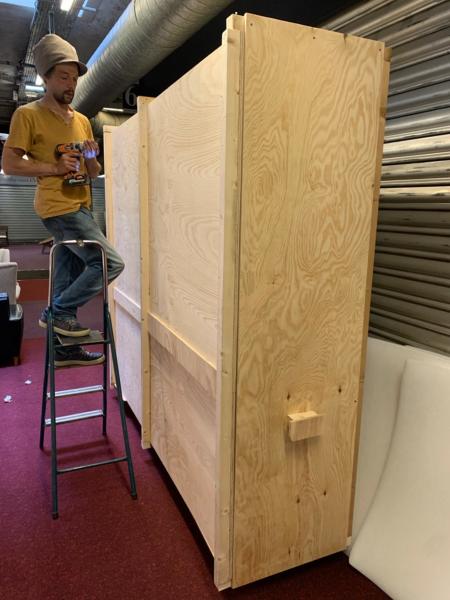
Here is an example of one of our wooden crate creations for a work of art at the Paris Saint-Ouen Flea Market.
Always attentive to our customers, we have quickly expanded the range of services offered by our packaging station.
More and more dealers have asked us to package their art. Many of them have had problems with their packaging, and the items arrive broken at the recipient's home.
We have therefore developed a tailor-made packaging service, in order to offer our clients a complete range of art packaging.
Our packaging formulas
1- The take away formula
Come see us at the packing station at 28 bis rue Paul Bert in the heart of the Paris Saint-Ouen flea market.
Choose your cardboard boxes, bubble wrap bags, and/or foam corners and get started creating your own packaging. To help you, we've written a blog post dedicated to the 5 essentials for quality packaging.
2- The tailor-made formula .
Move to the packing station.
We will work together to create the packaging best suited to your needs and we will create your artistic packaging on site.
For simple cardboard packaging this can be done within a day, however for the creation of wooden crates in the purest tradition of layetiers, we will need a few days.
See the Bulle packing station
Find us in
the Louis Vuitton City Guide
the Louis Vuitton City Guide
The Bubble
23 bis rue Paul Bert
93400 Saint-Ouen
Packing station
28 bis rue Paul Bert
93400 Saint-Ouen
23 bis rue Paul Bert
93400 Saint-Ouen
Packing station
28 bis rue Paul Bert
93400 Saint-Ouen
Information, quote request
contact@labulle-paris.com

